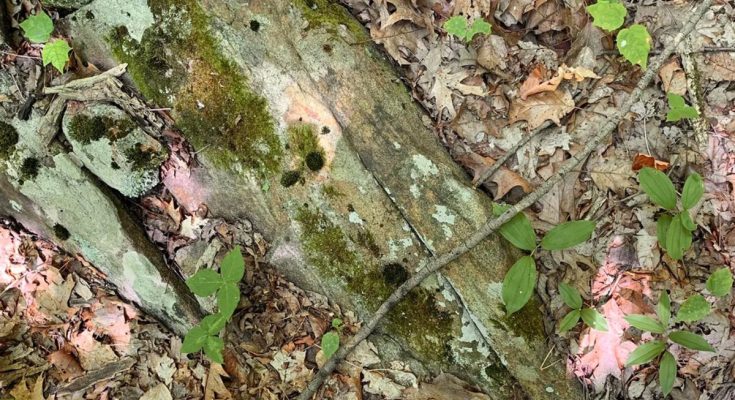When faced with a challenge like this, it’s easy to jump to conclusions or overlook crucial details. Let’s take a closer look at some common mistakes people make when attempting to solve these puzzles.
1. Relying on Quick Scanning

Most people rely on quickly scanning the image, assuming that anything out of place will immediately catch their eye. Unfortunately, that’s not how camouflage works. Snakes are experts at blending into their surroundings, and the more you rush, the more likely you are to miss subtle clues.
2. Ignoring Small Details
It’s easy to focus on larger, obvious elements in the image, like the mossy rock or clusters of leaves. However, snakes often use patterns and textures to mimic their environment, making their bodies blend into even the smallest details.
3. Overlooking Shadows and Shapes
Many puzzle solvers fail to account for shadows and shapes. A snake’s body might resemble a stick, a crack in a rock, or a shadow cast by foliage. By dismissing these features as irrelevant, you might overlook the snake entirely.
Step-by-Step Guide to Finding the Snake
If you’re still struggling to spot the snake, don’t worry—we’re here to guide you step by step. Let’s break down how you can systematically approach this puzzle and uncover the sneaky serpent.
Step 1: Divide the Image into Sections
Rather than trying to take in the entire image at once, mentally divide it into smaller sections. Focus on one part of the image at a time, starting from the top left and working your way across and down.
Step 2: Look for Patterns
Snakes often mimic the patterns of their surroundings. In this image, pay attention to the textures of the leaves and the lines on the mossy rock. A snake’s scales might align with these patterns, making it easy to overlook.
Step 3: Search for Curved Shapes
Unlike rocks and leaves, a snake’s body has a naturally curved, flowing shape. Scan the image for anything that looks like it could be a coiled or slithering body. Pay particular attention to areas near the rock and among the dry leaves.
Step 4: Pay Attention to Shadows
The snake might not be immediately visible, but its shadow or the slight disruption it creates in the lighting could give it away. Look for areas where the light and shadows seem slightly off or unnatural.
Step 5: Focus on the Highlighted Area
If you’re still stuck, here’s a clue: the snake is located in the circled area near the right side of the image. Carefully examine the leaves and sticks in that region. You’ll notice that what looks like part of the debris is actually the snake’s body, camouflaged among the dry leaves.
The Answer: Did You Find the Snake

If you carefully analyzed the circled area, you likely spotted the snake’s body lying among the fallen leaves. Its pattern blends so seamlessly with the environment that it almost looks like just another part of the forest floor. This incredible camouflage highlights why snakes are so skilled at remaining undetected in the wild.
Why Solving Puzzles Like This Is Good for Your Brain
Challenges like these aren’t just entertaining—they’re also a great way to boost your cognitive abilities. Here’s why you should try more puzzles like this:
- Improves Attention to Detail: Puzzles force you to slow down and carefully observe small details, enhancing your ability to focus.
- Encourages Patience: Finding the snake might take a while, but the satisfaction of solving it makes the effort worthwhile.
- Boosts Problem-Solving Skills: Your brain becomes better at identifying patterns and thinking critically when faced with similar challenges.
- Reduces Stress: Immersing yourself in a puzzle provides a welcome distraction from daily stresses, giving your brain a fun workout.
What’s Your Answer? Let Us Know!
Did you manage to find the snake without help? If so, congratulations—you’ve got an eagle eye for detail! If not, don’t worry; with practice, you’ll get better at spotting hidden objects in tricky puzzles like this one.
We’d love to hear from you. Drop a comment below to share how long it took you to find the snake—or if you found it at all! And if you enjoyed this challenge, share it with friends and family to see if they can spot the snake too.
Remember, puzzles like these are not just fun—they’re a great way to keep your brain sharp. So, why stop here? Challenge yourself with more puzzles and riddles to continue developing your logic, observation, and critical thinking skills. Who knows? The next time you face a tricky problem, you might just solve it like a pro. Happy puzzling!




